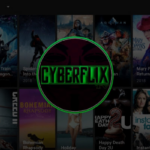These 7 work trends will define the future of work Post COVID
Since the time COVID-19 was declared a pandemic and the work models got jumbled, if anything has remained constant then it is change. Rethink, re-evaluate, redesign and other words synonymous to redoing ad rearranging practices, policies and the way we work have been overused and overdone. But, all of that stands true. The future of work is changing at an unprecedented level and it will have a lasting impact on the future of work for sure. So, the HR leaders are busy rethinking and identifying what requires immediate change and evaluation of the goals and plans made at the year start.
While they are at it, through this blog, we share some trends that will continue and the trends that will take birth post COVID -19!
Increase in remote work
Earlier only 30% of the workforce used to work remotely, but if the poll conducted by Gartner is to be believed then 48% of the employees are more likely to work remotely part-time after the virus is gone. HR software just like now will prove to be a great way to facilitate collaboration and communication in such cases. For the leaders, it would be the time when their employee experience strategies and performance goal setting would demand a reset from the lens of remote employees.
Designed for efficiency to designed for resilience
55% of organizational redesigns were earlier focused on streamlining roles, supply chains and workflows to increase efficiency. But in this pandemic, it shook because it had no scope for flexibility. Businesses will try to be more flexible to be more resilient in future. The roles and workflows would be designed basis outcomes while also thinking of the scope of flexibility in it. The employees shall also be given cross-functional knowledge and varied adaptive roles.
Stretch employer role to societal safety net
Employers are now thinking from the lens of society and that begins from their employees’ physical and mental well being. This can or cannot include financial assistance, the adjustment in operation hours and assistance financially. And that may even extend to the role of producing goods to providing services to the community.
High reliance on data
16% of employers were already using traditional monitoring employee tools to keep a check on employees like work hours, computer usage, emails or chat. Now with different workforce composition and model coming forth, the employers will shift rapidly to new and advanced monitoring tool like a complete HCM suite. While earlier data had a role to play in promotion, now the employees, especially the ones working remotely would be promoted on the basis of data collected only due to lack of human touch.
Gig Market Expansion
Many individuals have lost their jobs during the pandemic. Due to the same, they not only found the courage to try to nonstandard work models but also embrace them. A poll conducted by HROne on LinkedIn revealed that more than 35%, even those who were employed started looking for freelance projects to be more financially secure. For the employees, talent sharing is a trend we can see emerging. However, the way to measure the performance of these contingent workers in the HRMS software needs some work from both the employers and the sellers.
Chaffing Critical Skills and Roles
Prior to COVID-19, the capabilities needed to meet the organisational goals were viewed in the form of roles but now the employers have identified how important some of the critical skills are in the achievement of strategic goals. The focus post-COVID would be more on skills than on roles that are required in the workflow. It’s high time that companies start looking beyond the roles and motivate their employees to develop skills that can open multifarious career development doors for them.
The advent of New Top-tier Employees
The demand for transparency from companies from the employees’ end was already on the rise, it has elevated even more in the current situation. Now, employees want to know the actual business figures in case there are any salary cuts or layoffs. So, the way every organisation treats its employees matters a lot, the impact of such decisions for short-term benefits would have a long term impact on the brand image. So, the CEOs and other leaders should be advised to make sure financial impacts are absorbed by the high earning employees and not the broader employee base.
Besides, communicating openly and repeatedly to let the employees know that the company is there to support and the decisions are taken only as measures to save costs should be done too.
The aforementioned trends were our top 7 trends that we see emerging post-pandemic. One other trend is the integration of work tech and HR tech. What do you think? Do share other trends that you see emerging in the comments sections below.
















